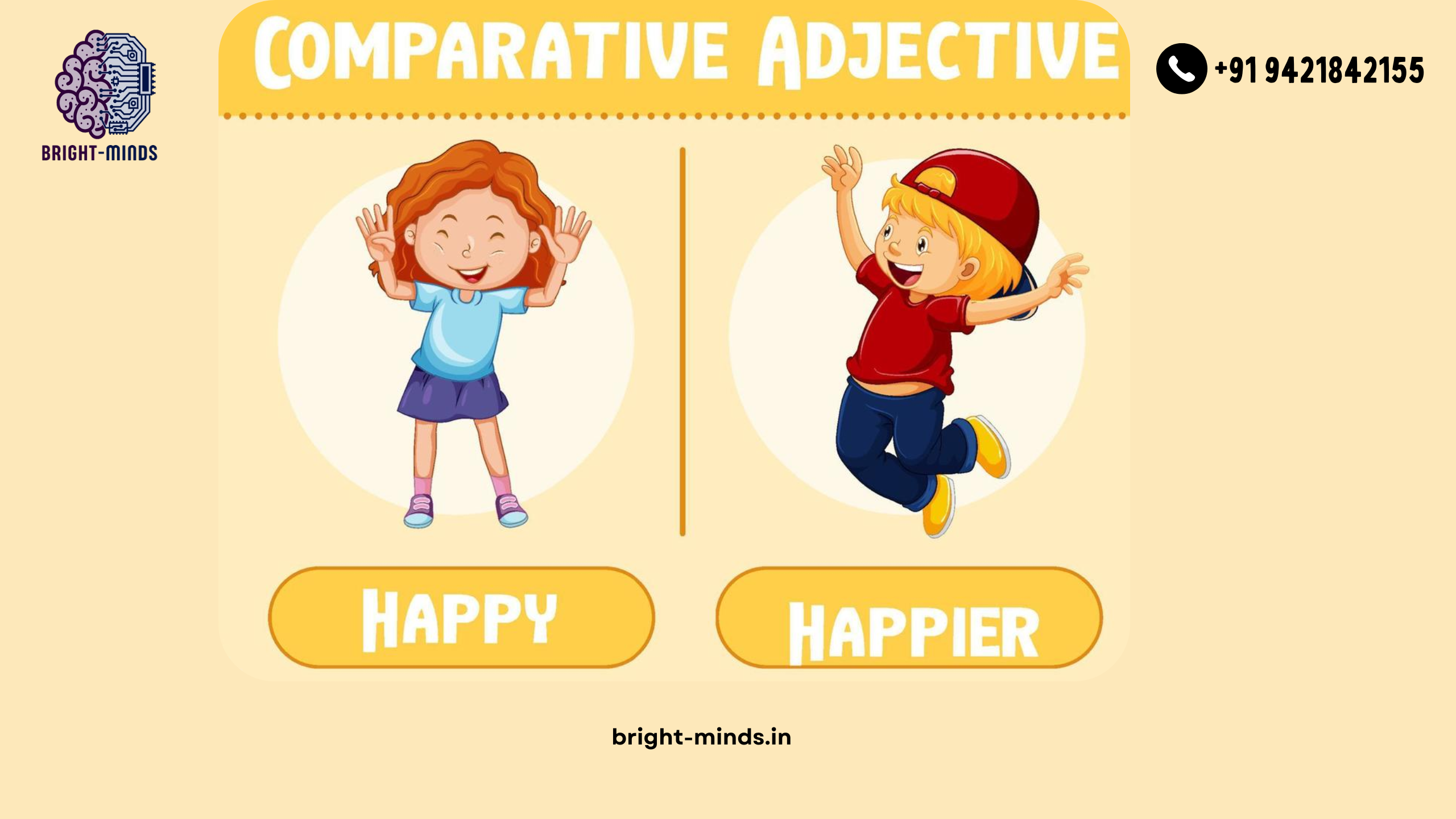Our phrases are fascinating because of the adjectives! They provide additional information about persons, locations, and objects by describing nouns. What happens, though, if we wish to compare two things? Comparative adjectives are useful in this situation!
What Are Comparative Adjectives?
We can compare two nouns with the use of comparative adjectives. They are used to demonstrate how one item differs from another in terms of quantity, quality, or size.
For instance:
Turtles are slower than rabbits.
Compared to that book, this one is thicker.
Compared to my friend’s house, mine is larger.
How to Form Comparative Adjectives
Most comparative adjectives follow simple rules:
- Add -er to short adjectives (one syllable)
- Tall → taller
- Small → smaller
- Fast → faster
- Use “more” before long adjectives (two or more syllables)
- Beautiful → more beautiful
- Interesting → more interesting
- Careful → more careful
- Irregular Comparative Adjectives (do not follow the usual rules)
- Good → better
- Bad → worse
- Far → farther/further
Fun Activities to Learn Comparative Adjectives
Here are some exciting ways to practice:
1. Adjective Race
Pick two objects and compare them. Example: “Which is bigger, the ball or the apple?”
2. Flashcard Fun
Write adjectives on flashcards and let kids form their comparative versions.
3. Sentence Challenge
Give kids two words and ask them to make a sentence using a comparative adjective. Example: “Elephant, dog” → “An elephant is bigger than a dog.”
4. Story Time
Encourage kids to write a short story using at least five comparative adjectives.
Common Mistakes to Avoid
- Double comparisons: Avoid using “more” and “-er” together. ❌ “More taller” → ✅ “Taller”
- Wrong irregular forms: ❌ “Gooder” → ✅ “Better”
- Not comparing two things: Comparative adjectives must compare two things, not just one.
Conclusion
Comparative adjectives add interest to descriptions and aid in the comprehension of differences. Children may have fun while improving their grammar by following these easy guidelines!
Do you want to see how good you are? Try creating new sentences by comparing objects in your environment!

